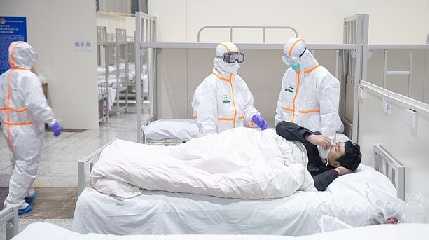
SEOUL, South Korea (AP) — South Korea’s daily average of new COVID-19 cases declined last week for the first time in more than two months, but the number of critically ill patients and deaths will likely continue to rise amid the omicron-driven outbreak, officials said Monday.
South Korea reported an average of about 350,000 new cases last week, the Korea Disease Control and Prevention Agency said Monday. It was the first drop in the weekly average in 11 weeks, KDCA Commissioner Jeong Eun-kyeong said.
The current outbreak has likely peaked and is expected to trend downward, Jeong said citing expert studies. But new cases in South Korea will likely drop slowly because of relaxed social distancing rules, an expansion of in-person school classes and rising infections due to the coronavirus mutant widely known as “stealth omicron,” she said.
The number of virus patients in serious or critical condition and fatalities are also expected to keep rising for now, Jeong said. Experts say these counts often trail about two weeks behind the evolution of case counts.
Health Minister Kwon Deok-cheol separately said the omicron-led outbreak has peaked, though a more thorough analysis is needed to confirm whether the outbreak has shifted into a downward trend.
On Monday, South Korea reported 187,213 new COVID-19 cases in the latest 24-hour period, marking the first time daily cases have fallen below 200,000 in 25 days. The number of seriously or critically ill patients reached a record high of 1,273.
The highly transmissible omicron variant has forced South Korea to abandon a stringent COVID-19 response based on mass laboratory tests, aggressive contact tracing and quarantines to focus limited medical resources on priority groups, including people 60 and older and those with preexisting medical conditions.
Health officials recently significantly eased quarantine restrictions and border controls and stopped requiring adults to show proof of vaccination or negative tests when entering potentially crowded spaces like restaurants so that more public and health workers could respond to rapidly expanding at-home treatments.




